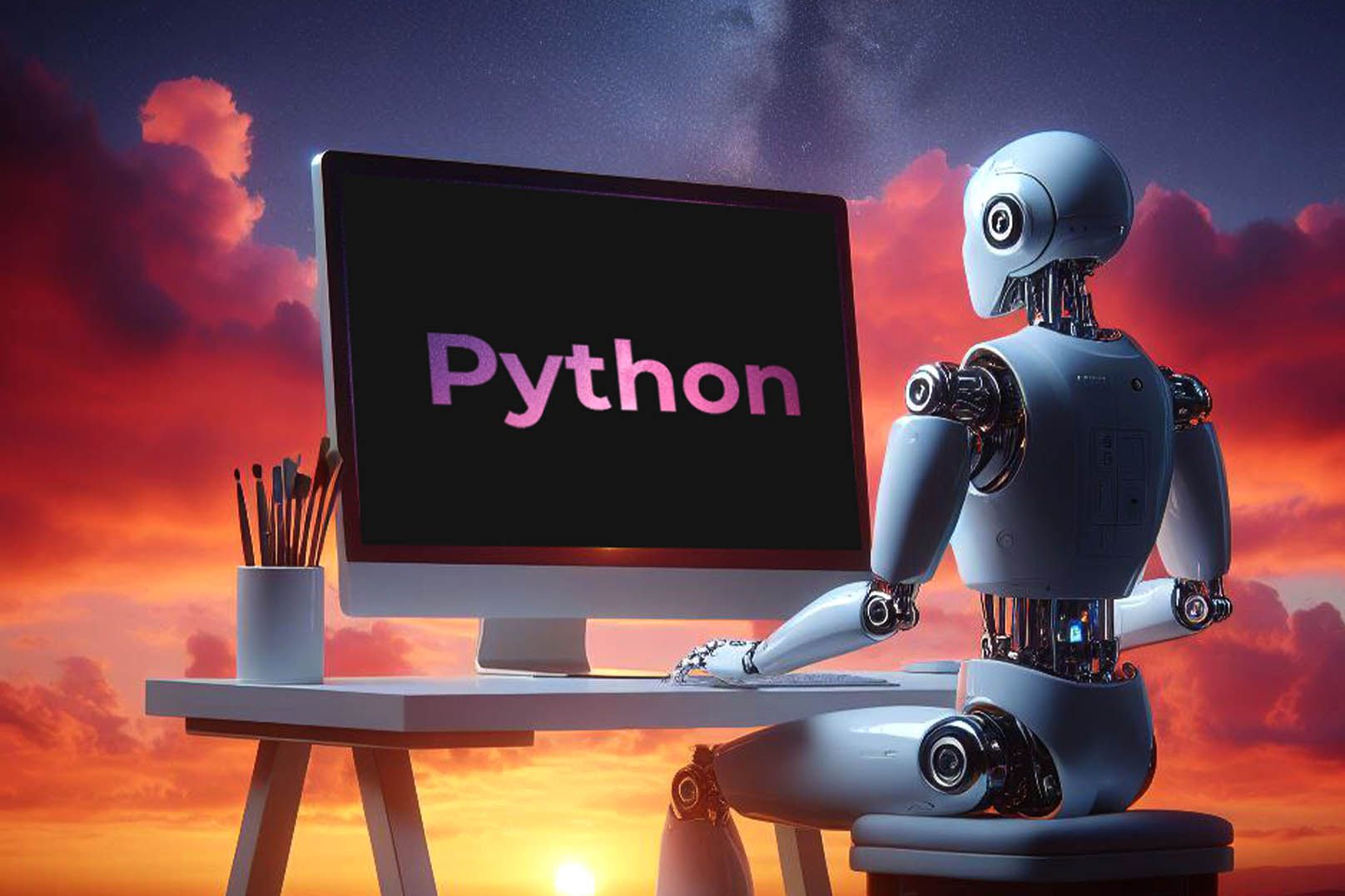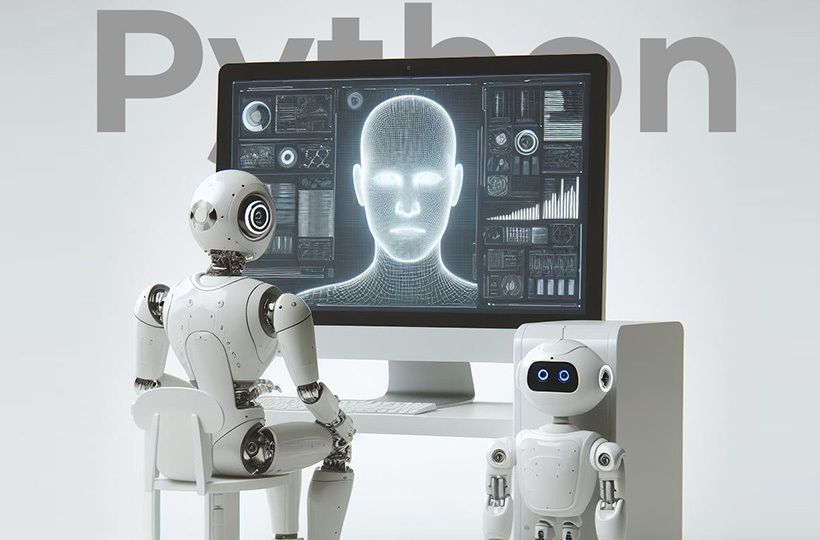Build Exciting Machine Learning Projects with Python

Python is simple, flexible, and packed with powerful tools. Whether you're just starting or have extensive experience, Python opens up a world of exciting and innovative projects for everyone in artificial intelligence and machine learning.
We'll start with the basics and work up to the advanced stuff. You'll learn how to create projects and tackle real-world problems head-on. This journey will hone your skills and set you apart in this fast-paced field.
Key takeaways
- Python is a great choice for machine learning projects.
- Its easy-to-understand nature and robust libraries are helpful for beginners and experts alike.
- Working on machine learning projects with Python enhances your skills and showcases your talent.
- This article gives you a detailed roadmap for creating great machine learning projects with Python.

Getting Started with Python for Machine Learning Projects
Python is the best choice for machine learning. It's suitable for beginners and those with some programming skills. Start with a project that interests you to make it easier to learn. Consider these project ideas:
- Predicting housing prices based on historical data
- Classifying spam using natural language processing
- Building a recommender system for movies or products
- Detecting credit card fraud
- Recognizing handwritten digits using image classification
For inspiration, check out these easy machine learning project ideas for beginners.
A Step-by-Step Guide to Working with Python for Machine Learning
- Set up Python and Anaconda to get a wealth of machine-learning tools.
- Choose an integrated development environment (IDE) like Jupyter Notebook or PyCharm.
- Learn the basics of Python—variables, data types, loops, and conditionals.
- Learn Python libraries like NumPy, Pandas, and Matplotlib for data-driven tasks.
- Understand key machine learning concepts like supervised and unsupervised learning, function development, and more.
- Implement your first machine learning project from the list above. Use tutorials and online resources to help you.
- Experiment with cutting-edge algorithms and refine your projects for better results.
Once you've completed these steps, you're well on your way to machine-learning projects with Python. Keep practicing, find resources, and join groups to meet others interested in machine learning.
Implementing Machine Learning Algorithms in Python
Python makes implementing machine learning algorithms simple and powerful. Developers use Python to access a wide range of libraries and tools. These tools help simplify complex AI algorithms.
Python has a rich ecosystem for machine learning. Libraries like NumPy, Pandas, and Scikit-learn are key to data processing and learning models. They make it easy for developers to build and use machine learning models.
Python offers a wide range of machine learning algorithms, from linear regression to deep learning. Developers can choose from simple to advanced options. Each algorithm meets different needs.
Example Python Project. Sentiment Analysis Using Natural Language Processing (NLP)
Sentiment analysis using NLP is a common machine learning project. It teaches a model to understand the sentiment of text, such as whether it is positive or negative. This is useful in areas such as social media and customer reviews.
Python analyzes sentiment using tools like NLTK and TextBlob. Developers work with text data, extract features, and build models to classify sentiment. This is great for analyzing social media, customer sentiment, and product reviews.
Comparison of Machine Learning Algorithm Implementations in Python
Python helps developers tackle complex issues and find insights in data. Its easy syntax and wide library range make it perfect for machine learning.
Practical Machine Learning Projects with Python
This section will look at hands-on machine learning projects that you can do using Python. Working on real-world projects will help you understand machine learning. In the projects, you can apply the theory to real-world situations.
By working on these projects, you will:
- Get hands-on experience with machine learning algorithms
- Be able to analyze data for training models
- Understand how to tune and evaluate AI models
- Become better problem solvers and improve critical thinking
Project Presentation
Project 1. Image Classification Using Convolutional Neural Networks (CNN). Build a model to classify different images accurately using CNN architecture.
Project 2. Customer Review Sentiment Analysis. Build a model to analyze reviews and classify them as positive, negative, or neutral.
Project 3. Detecting Fraud in Credit Card Transactions. Develop a system that identifies and flags suspicious credit card transactions.
Project Difficulty Levels
These projects are just the beginning of what's possible on your machine-learning journey. With Python, you can solve complex problems and advance machine learning.
Improve your skills with Python machine-learning project tutorials
If you want to improve your Python machine-learning skills, many tutorials can help you. With them, students can delve into topics such as:
- Advanced algorithms and techniques for data preprocessing and feature development
- Evaluating and fine-tuning AI models to improve machine learning models
- Using machine learning for natural language processing tasks
- Building deep learning frameworks with TensorFlow and Keras
- Learning unsupervised learning techniques, including clustering and dimensionality reduction
These tutorials include detailed instructions, code examples, and exercises. They suit data scientists, software developers, or students interested in machine learning.
Building a Portfolio of Machine Learning Projects with Python
A successful portfolio will have projects from various fields, showing a broad understanding and ability to solve real-world problems.
Key aspects to building a portfolio:
Machine Learning Areas
In finance, machine learning is used to detect fraud. Algorithms study transaction patterns to detect suspicious activity. This alerts banks to potential fraud, protecting people and businesses' money.
Another benefit is algorithmic trading. Machine learning uses past market data to find trading patterns. This helps traders decide when to buy or sell, making trading smarter and faster.

Machine Learning in Healthcare
In healthcare, diseases are diagnosed by analyzing medical images and data. This allows doctors to diagnose and treat patients quickly and accurately.
Machine learning helps create new drugs. It studies data about molecules and their interactions, speeding up the search for new treatments for patients.
Machine Learning in Marketing
Machine learning improves customer segmentation by studying behavioral data. Marketers create personalized campaigns for different groups, which increases sales and customer happiness.
Machine learning also makes sentiment analysis in marketing possible. It evaluates social networks and reviews to assess buyers' inclination towards a brand. This allows companies to improve the quality of their products and services.
Python Libraries for Deep Learning
With deep learning, AI machines can think like humans. Python is ideal for deep learning projects. It is used to create complex neural networks and solve complex problems.
Key Tools and Libraries for Python Machine Learning Projects
- Scikit-learn is a Python library for machine learning. It offers algorithms for tasks like classification and clustering. It is easy to use and has extensive documentation, which makes it suitable for testing different machine-learning models.
- NumPy is used in Python for scientific computing. It helps with numerical operations and big data processing.
- Pandas are used for data processing and analysis. It allows you to clean, transform, and explore data. Tools for handling missing data and merging datasets are essential for machine learning.
- Matplotlib creates many visualizations, such as line charts and scatter plots. Its options allow you to clearly show machine learning results.
Troubleshooting Python Machine Learning Projects
Preprocessing and Data Cleaning. Working with large datasets in Python requires attention and effort. If done incorrectly, it will lead to flawed AI models and predictions.
To overcome this, analyze your data in detail. Find and handle missing values and errors. Use Python libraries like Pandas and NumPy to clean and fix your data.
Choosing an AI Model and Tuning Hyperparameters
Choosing and tuning the right AI model can be difficult. There are many algorithms and settings to consider.
A structured approach helps you choose and tune your AI model correctly. Understand the pros and cons of different algorithms. Test them on various datasets. Techniques like grid or random search help you find the best settings for your AI model.
Overfitting and Underfitting
Overfitting is when an AI model learns too much from the training data and performs poorly on new data. Insufficiency is when an AI model cannot find underlying patterns.
To address these issues, understand how complex your AI model is. Use techniques like L1 and L2 regularization to do this, and choose the right ways to validate it, like cross-validation.
Computing resources and scalability
Large projects can reach resource and scalability limits. Training large AI models on big data requires a lot of computing power.
Using Apache Spark makes it easier to work with large projects. Cloud platforms like AWS and Google Cloud offer scalable solutions. They help manage large machine-learning projects.
Summary
This guide covers Python's role in machine learning, from simple tips to advanced usage. It shows how beginners can get started, and experts can progress.
Python's many libraries, such as Scikit-learn, TensorFlow, and Keras, are great for various needs, whether hands-on projects, deep learning, or portfolio building. Python adapts to different requirements to help you achieve your goals.
As you learn more about deep machine learning, keep learning and growing with Python. Stay up-to-date with new tools and enhancements. To learn more, check out this comprehensive overview of machine learning projects in Python.
FAQ
What is the role of Python in machine learning projects?
Python is valued in artificial intelligence and machine learning for its simplicity and flexibility. It has a large selection of libraries.
How to get started with Python for machine learning projects?
First, learn the basics of the Python language. Try creating simple machine-learning projects.
What are some examples of machine learning projects implemented in Python?
These include sentiment analysis, image recognition, and spam detection. Other common projects include fraud detection and recommender systems.
Why is it important to create a machine learning portfolio with Python?
A portfolio demonstrates your knowledge to employers or clients. It is proof that you are capable of solving problems using machine learning.
How to use Python for deep learning projects?
Python is essential because of the TensorFlow, Keras, and PyTorch libraries. These libraries make it easy to create and train deep neural networks.
What are the key tools and libraries for machine learning projects in Python?
Tools and libraries include Scikit-learn, TensorFlow, Keras, PyTorch, and NumPy. They suit various machine learning tasks, focus on deep learning, and support numerical operations.
What are the common challenges in Python machine-learning projects?
The challenges include data preprocessing and choosing appropriate algorithms. Avoiding overfitting and properly tuning hyperparameters.




